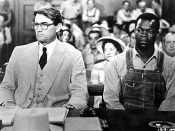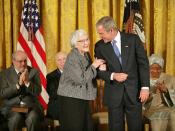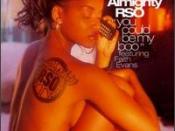OUTLINE
I. Introduction: Thesis statement
II. Central Themes
A. Part one, Boo's Story
B. Part two, Tom Robinson's story
IV. Change in Children
A. What children thought at first
B. How they changed
C. Feelings after the change
V. Historical Content; background
A. time place, relevance to story
B. relation to Scottsboro trials
VII. Conclusion
In this paper I intend to explore one of the main themes of Harper Lee's
To Kill A Mockingbird, the issue of prejudice. I intend to explore how the children
change through out the novel and the novel relevance to the time and place it was
written, in other words, the historical content.
Prejudice is defined in Comprehensive Desk Dictionary by Thorndike Barnhart as
an 'opinion formed without taking the time and care to judge fairly'. The main focus of part one is Boo Radley. Boo was considered to be an outcast by many of the people in Maycomb.
He never came outside, except for two occasions in the book. The first time Boo comes out is when a fire breaks out at Miss Maudies, and Scout is standing outside in the cold. Boo wraps a blanket around her, without her knowing that he did. The other time didn't happen until part two, when Jem and Scout are attacked by Bob Ewell. People were prejudiced against Boo because he is different. The children had not seen him so they made up stories about him (Johnson,1). They were afraid of him. They didn't realize it was Boo leaving the gifts and wanted to be friendly. In part two the main focus is on Tom Robinson. He is a black man accused of raping white woman. The prejudice in this part of the novel is called racism. The opinion formed because of the color if Tom's skin.


